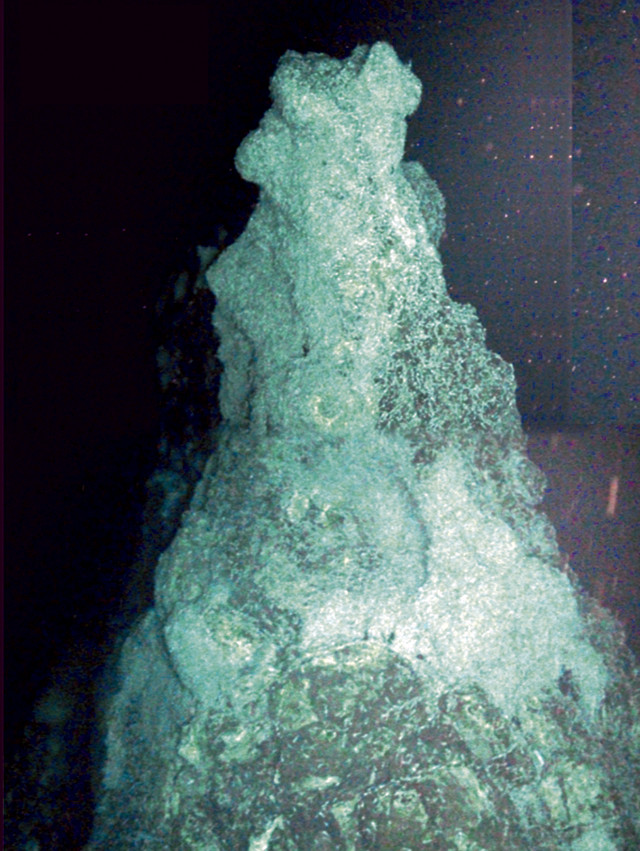
by Timothy Oleson Tuesday, April 19, 2016

A 3-meter-tall talc spire tops the main hydrothermal vent in the Von Damm Vent Field. Credit: National Oceanography Center Southampton.
Seafloor chimneys belching dark plumes of superheated, acidic fluids into the ocean, called “black smokers,” are the most common kind of submarine hydrothermal vent known. But recently scientists discovered a vent system, of a seemingly gentler nature, unlike any observed before.
Active hydrothermal systems — in which geothermally heated seawater percolates through ocean crust and is injected back into the ocean — are typically found at seafloor spreading centers where fresh magma rises toward the surface between tectonic plates. The new vent system, however, called the Von Damm Vent Field, lies 13 kilometers west of the Mid-Cayman Spreading Center in the Caribbean Sea, atop oceanic crust that is 1 million to 2 million years old.
“This vent site is home to a community of fauna similar to those found at the Mid-Atlantic Ridge … but the minerals and chemistry at the Von Damm site are very different [from] any other known vents,” said Matthew Hodgkinson of the University of Southampton’s National Oceanography Center in England in a statement. Fluids vented at the site had pH levels near neutral and low concentrations of dissolved metals, and reached 215 degrees Celsius at the warmest — far cooler than most black smoker fluids, which can reach roughly 400 degrees.
Additionally, instead of metal-rich sulfides, the Von Damm vents are built mainly from talc — known for being Earth’s softest mineral — that precipitates from the hydrothermal fluids.
Despite these differences, Hodgkinson and colleagues reported in a new study in Nature Communications that the heat flux from vents in the Von Damm Field is comparable to that from black smokers. The researchers also noted that this new type of hydrothermal system, overlooked until now, could be widespread in the oceans. Such sites “could be important contributors in the exchange of chemicals and heat between the Earth’s interior and the oceans, and may be missing from current global assessments of hydrothermal impact on the oceans,” Hodgkinson said.
© 2008-2021. All rights reserved. Any copying, redistribution or retransmission of any of the contents of this service without the expressed written permission of the American Geosciences Institute is expressly prohibited. Click here for all copyright requests.